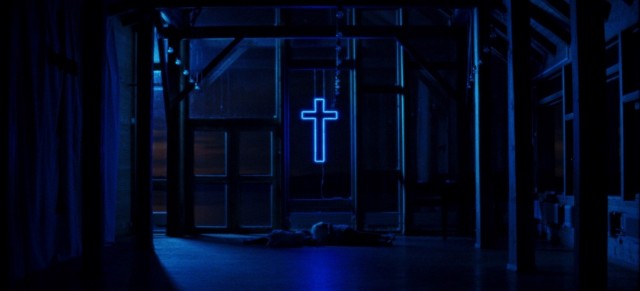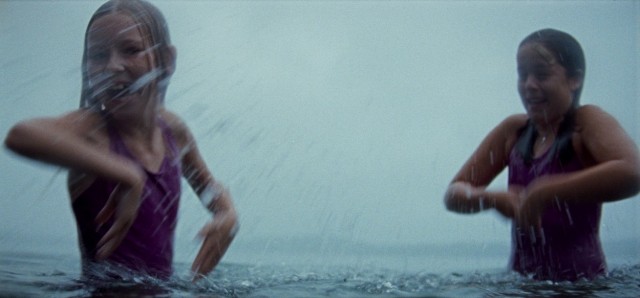Throughout history, people have blamed the devil for things they don’t understand or can’t accept. Be it a disability, overt sexuality, or simply not conforming to the status quo, Satan has been made the culprit. Unsurprisingly, women have always been intertwined within this wicked narrative because, in patriarchal or devout religious thinking, they are to be feared. Having an understanding of this long, complicated history is perhaps what makes Thea Hvistendahl’s short horror Satan’s Barn (Children of Satan) so enthralling. The Norwegian filmmaker, who was featured on S/W back in November for her edgy coming-of-age short Virgins4lyfe, is back with another stylish exploration of girlhood, but this one’s rich in the occult.
Written by Hvistendahl and her writing partner, Sofia Lersol Lund, Satan’s Barn proves that little girls, even 11-year-olds Louise and Maria, can be warped by evil if left unsupervised. Set against the backdrop of an isolated Christian summer camp, the film explores what happens when we’re taught too many things are sinful. When a strange, mute girl suddenly joins camp, Louise and Maria assume that she’s possessed by Satan and they must ward her off. As the two girls escalate each other’s unease, it becomes clear just how dangerous fear can be when left unchecked.

Hvistendahl incorporates demonic imagery and subtle visual effects to incite our unease.
Seamlessly blending reality with fantasy, Hvistendahl wows with her prolific visual direction, which stylishly flirts with evil. Injecting striking images of fires burning, little girls floating, and flashes of a neon cross, Hvistendahl toys with our perception of events. To Louise and Maria, witnessing the “weird” girl having a seizure or catching two female camp counselors engaging in a sexual act is proof of the devil because they go against the bible’s teachings.
Of course, having a mental disability or being homosexual is far from evil, but Hvistendahl wants her audience to get into Louise and Maria’s headspace. So while we see these moments transpire, Hvistendahl incorporates demonic imagery and subtle visual effects (the centipede crawling out of the mute girl’s nose really shook me) to incite our unease until we’re not sure what’s real and what’s not. With truly stunning cinematography, the film was shot on 16mm on the western coast of Norway.
“It is really about the need to belong and how essential that is for humans”
While thematically, Satan’s Barn offers a cynical commentary on religion, it also explores what it means, or rather what it takes, to feel accepted. “For me it is really about the need to belong and how essential that is for humans, to the point where we would thrash our morals and thoughts, just to be able to stay inside a group”, Hvistendahl tells S/W. “It’s very fascinating how our brains can so easily transform and mess with our minds”.
“In this case, the fear and fantasy trigger each other to a point where the game goes too far”, the director adds. In more ways than one, Louise and Maria need something to hold their fragile friendship together, for these two girls, their fear of evil is what binds them. “In this film I really wanted to portray how their friendship evolves and grows closer the more sure they get that Satan is there,” explains Hvistendahl.

Iben Amalie Valås and Stella Valpuri Nilsen as the short’s young protagonists Louise and Maria.
Perhaps the most disturbing aspect of Satan’s Barn is that it involves children. There truly is nothing more unsettling than watching innocence personified dabble with the devil. “The kind of innocent evilness of children has always fascinated me, especially why they do it. There is just something very pure and clean about children behaving in evil ways. I think they have the same mechanics as adults, it’s just that adults do it in a more complicated manner,” says Hvistendahl. And it’s for this reason that the film’s ending is so unnerving.
Satan’s Barn won the Méliès d ‘Argent al mejor corto at Sitges, during an impressive festival run, which also saw the short play Nightstream and Vienna Shorts. Hvistendahl is currently in pre-production for her debut feature, Handling The Undead, a horror film based on the book written by John Ajvide Lindqvist (Let the Right One In).

 Chelsea Lupkin
Chelsea Lupkin